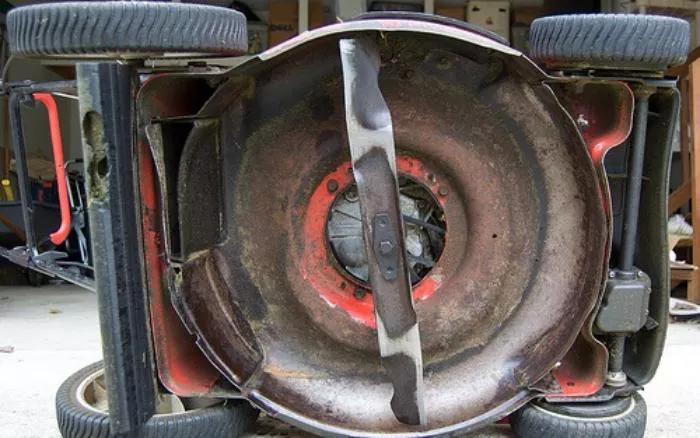Keeping commercial lawn mower blades sharp is essential for maintaining a healthy lawn and ensuring efficient mowing. Dull blades tear grass instead of cutting it cleanly, leading to uneven growth, brown patches, and increased vulnerability to disease. For professional landscapers and groundskeepers, properly sharpened blades also improve fuel efficiency, reduce wear on the mower deck, and deliver a crisp, manicured appearance to turf. This guide provides a detailed, professional approach to sharpening commercial mower blades safely and effectively while maximizing their performance and lifespan.
Why Sharp Blades Matter for Commercial Mowing?
Sharp blades are critical for professional lawn care. A clean cut promotes faster grass recovery and reduces stress on the turf. Dull blades, on the other hand, leave ragged edges that turn brown and invite pests or fungal infections.
Commercial mowers work harder and longer than residential models. Frequent use means blades wear down faster. Regular sharpening ensures optimal performance, reduces fuel consumption, and extends the life of the mower.
Safety Precautions Before Sharpening
Safety should always come first when working with mower blades. A commercial mower’s blades are heavier and sharper than residential ones, increasing the risk of injury. Follow these precautions:
- Disconnect the spark plug to prevent accidental starts.
- Wear heavy-duty gloves to protect your hands from sharp edges.
- Secure the mower on a stable surface to avoid movement during blade removal.
- Use a block of wood to immobilize the blade while loosening the bolt.
Taking these steps minimizes risks and ensures a smooth sharpening process.
Tools Needed for Sharpening Commercial Blades
Having the right tools makes sharpening easier and more effective. Here’s what you’ll need:
- Bench grinder or angle grinder for fast, even sharpening.
- File or hand sharpening tool for precision work.
- Torque wrench to reattach the blade securely.
- Blade balancer to check for proper weight distribution.
- Vise or clamp to hold the blade steady during sharpening.
Using quality tools ensures a professional result and prolongs blade life.
Removing the Blade from the Mower
The first step is removing the blade safely. Follow these steps:
- Tilt the mower carefully to access the blade without spilling oil or fuel.
- Mark the blade orientation to reinstall it correctly later.
- Loosen the retaining bolt using a breaker bar if necessary.
- Inspect the blade for cracks or excessive wear before sharpening.
If the blade is damaged beyond repair, replace it instead of sharpening.
Inspecting the Blade for Damage
Before sharpening, check the blade thoroughly. Look for:
- Cracks or bends that weaken the blade.
- Excessive wear near the cutting edge.
- Rust or pitting that may affect performance.
A damaged blade can break during operation, posing a safety hazard. If in doubt, replace it.
Sharpening the Blade Correctly
Sharpening a commercial mower blade requires precision. Follow these steps for the best results:
- Secure the blade in a vise to keep it steady.
- Follow the original angle (usually between 30 and 45 degrees).
- Use smooth, even strokes with a grinder or file.
- Avoid overheating the metal by grinding in short bursts.
- Maintain equal sharpening on both ends to keep the blade balanced.
Overheating can weaken the metal, so take breaks if needed.
Balancing the Blade After Sharpening
An unbalanced blade causes vibration, which damages the mower and leads to uneven cuts. Use a blade balancer to check weight distribution:
- Place the blade on the balancer.
- Observe if one side tilts downward.
- Grind more metal from the heavier side until balanced.
A balanced blade ensures smooth operation and prevents engine strain.
Reinstalling the Blade Properly
Once sharpened and balanced, reinstall the blade carefully:
- Align the blade as marked earlier.
- Tighten the bolt securely with a torque wrench.
- Double-check for proper seating.
A loose blade can detach during mowing, causing serious damage.
Testing the Mower After Sharpening
Before resuming commercial mowing, test the mower:
- Start the engine and let it idle.
- Listen for unusual vibrations.
- Check the cut quality on a small patch of grass.
If everything runs smoothly, the blade is ready for professional use.
Maintaining Sharp Blades for Longevity
Regular maintenance keeps blades sharp longer:
- Clean blades after each use to prevent grass buildup.
- Inspect blades weekly for wear or damage.
- Rotate multiple blades to extend their lifespan.
Proper care reduces the frequency of sharpening and replacement.
When to Replace Instead of Sharpen?
Even the best-sharpened blades wear out eventually. Replace the blade if:
- It has deep cracks or bends.
- The cutting edge is too thin.
- Balancing becomes impossible.
Using a worn-out blade risks mower damage and poor lawn health.
Conclusion
Sharpening commercial lawn mower blades is a vital part of professional lawn care. A sharp blade ensures clean cuts, reduces fuel consumption, and extends mower life. By following these steps, you can maintain sharp, efficient blades for superior mowing results. Regular inspection and proper sharpening techniques keep your equipment in top condition, ensuring a well-manicured lawn every time.
This guide provides a complete, professional approach to blade maintenance. With the right tools and techniques, you can achieve optimal performance from your commercial mower. Keep safety in mind, and always prioritize quality work for the best results.
Related topics:
- HOW TO BALANCE A LAWN MOWER BLADE AT HOME?
- 4 BEST 60-INCH RIDING LAWN MOWER
- WHAT IS A MULTI-PURPOSE LAWN MOWER BLADE?

